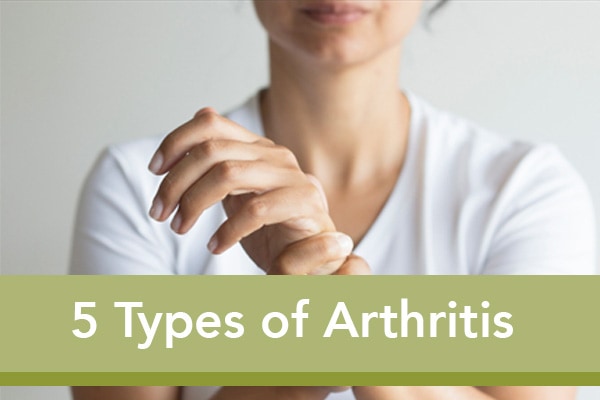Arthritis literally means “inflammation of the joint” and describes any disease process that leads to cartilage loss. Cartilage plays a critical role in our, as it “cushions” the joint space and prevents bone-on-bone contact. The destructive process of arthritis weakens cartilage, causing it to disappear, leading to painful bone-on-bone contact. While there are many factors that contribute to someone developing arthritis, the most common offenders are the gradual wear-and-tear of the aging process, traumatic injury, and abnormal immune responses. Other common risk factors include genetics, obesity, previous traumatic injury, and weak or underdeveloped muscles supporting a joint.
Arthritis can affect almost every part of the body, from the ball-and-socket joint of the shoulder all the way down to the smallest joint of the toe. Our joints contain intricate systems of cartilage, bone, muscle and connective tissue, all of which can gradually decline over time or be damaged by acute injury. While there are more than one hundred known types of arthritis, the five most common forms are osteoarthritis, rheumatoid arthritis, post-traumatic arthritis, psoriatic arthritis, and gout.
Osteoarthritis
This is by far the most common form of arthritis. It is the classic “wear and tear” that happens over time as we grow older and our joints fall prey the aging process. This destructive process wears away the cartilage that cushions the joint, making movement more and more painful until the cartilage loss progresses to full-blown bone-on-bone contact.
Rheumatoid Arthritis
Rheumatoid arthritis is an autoimmune disease, meaning the disease is caused and progressed by the body’s own immune system. The pain of rheumatoid arthritis is caused by the immune system attacking the joints, specifically the synovium, causing inflammation, pain, stiffness, and redness above the joint.
Post-Traumatic Arthritis
A very common form of osteoarthritis that is caused by damage to a joint result from acute traumatic injury. Even after an injury has more or less healed, the lingering damage can turn into arthritis over time. These injuries can result from a variety of things, from sports to motor vehicle accidents. Traumatic injuries that damage the cartilage and bone can change the mechanics of the joint and making it wear out more quickly than it otherwise would. Post-traumatic arthritis is accelerated by repetitive injury and carrying excess body weight.
Psoriatic Arthritis
A form of arthritis that affects people suffering from psoriasis, an autoimmune condition that causes red, splotchy patches of skin with silvery scales to appear. Most people develop psoriasis before they are diagnosed with psoriatic arthritis, but joint pain caused by psoriatic arthritis can sometimes strike before any lesions appear on the skin. The key symptoms of psoriatic arthritis are joint pain, stiffness, and swelling, which can affect any part of the body, from the fingertips and spine to the little toe. Symptoms can range from relatively mild to severe. In both psoriasis and psoriatic arthritis, flareups may be following by long periods of remission. Because there is no cure for psoriatic arthritis, the focus is necessarily placed on controlling symptoms and preventing irreversible damage to the joints. If left untreated, psoriatic arthritis could be disabling.
Gout
An exceptionally painful form of arthritis in which an excessive amount of uric acid builds up in the blood, which leads to crystals being deposited in the joint space. Attacks of gout can last between three and ten days and bring intense pain, inflammation, stiffness, and redness in the joint.

